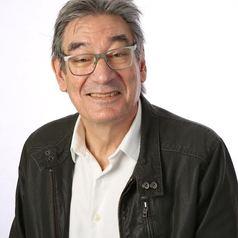- Posted on 10 Jun 2025
- 7 minutes read
At the Australian Stuttering Research Centre, researchers and clinicians are changing the lives of adults and children who stutter.
Speech is a complicated process. Talking happens fast, and many muscles need to coordinate very quickly.
For some children, during the time of peak language development stuttering develops. This can occur overnight for some and can cause parents to become distressed.
When Professor Mark Onslow first became a speech pathologist, the prevailing view was that stuttering was a psychological disorder.
But perspectives have changed, and stuttering is now recognised as a physical condition, although psychological consequences can develop for some.
Professor Onslow is Foundation Director at the Australian Stuttering Research Centre (ASRC), a world-leading research group helping people who stutter.
The ASRC takes a multi-disciplinary approach to the management of stuttering in children and adults, bringing in expertise from speech pathology and clinical psychology to help individuals and families affected by this potentially troubling condition.

A client's perspective
Luis Miguel Lainez Reche, 34, is an adult who stutters.
He is a senior software engineer in Sydney who is undergoing treatment at the Centre.
His stuttering began when he was a child, but it was as a teenager that he began to struggle with it.
“The thing with stuttering is, the more you care, the more you will stutter, and the more anxiety you will have,” Mr Lainez Reche says.
When the anxiety finally became overwhelming, he sought help.
Mr Lainez Reche’s treatment strategy has two parts.
One involves him retraining his speech, using techniques like gently starting words, so that he has greater control over his speech.
The other tactic is helping him to manage the anxiety he experiences as a result of his stuttering.
“The other part that I think is equally important, if not more important, is the way that you perceive your stuttering and how you communicate to yourself about your stuttering,” he says.
That has helped him dampen down the self-criticism when he does stutter, and instead celebrate all the times that he doesn’t.
“That part of the training gave me a lot of peace of mind and decreased a lot of my anxiety when speaking, which also led to less stuttering,” he says.

Causes and treatments
The first challenge is how to manage stuttering when it first appears.
In the middle of the last century, the view was that all children have occasional normal disfluencies in their speech – such as “um” and “uh” – but anxious parents calling attention to these would make a child begin to stutter.
Professor Onslow says that turned out to be completely wrong.
At the ASRC, clinicians take a much more head-on approach.
“We often use the Lidcombe Program for pre-school children, which has scientific evidence to support it,” says Professor Onslow.
“A speech pathologist teaches parents to do the treatment with their children in everyday conversations, and to give them feedback about their speech.”
The answer to the question of what causes stuttering is not fully clear.
But Professor Onslow says that stuttering is multifactorial; it’s influenced by genetics, physiology, and rapidly developing early childhood language.
But whatever the cause, early intervention is vital to prevent the more serious consequences of stuttering, which are bullying, social isolation, and social anxiety.
Professor Onslow says that around two-third of adults with a stutter who attend clinics have social anxiety issues related to their stuttering.
Studies show that the quality of life impairment of stuttering is equivalent to that of chronic health conditions such as diabetes, cardiovascular disease, and cancer.

Coping with adult stuttering
The second important role the ASRC plays is helping adults who have stuttered for most of their lives learn to live with it and – if they want to – try to reduce it.
“It's not ideal, struggling all day to control stuttering, and, at the other extreme, it's not ideal to be unable to say what you want to because of the stuttering,” says Professor Onslow.
Speech pathologists at the Centre strive to find a happy medium for adults who want to work on their stuttering, by achieving as much control as they can.
Also, ASRC researchers have developed a CBT program specifically for people to stutter, to manage the social anxiety associated with stuttering.
They don’t even have to attend a clinic in person: the iGlebe CBT program provides treatment online.
The digital approach means people who stutter living in 76 countries around the world have now benefitted from the ASRC’s programs.
Find out more
The Australian Stuttering Research Centre conducts world-class research and provides specialist treatment services.







